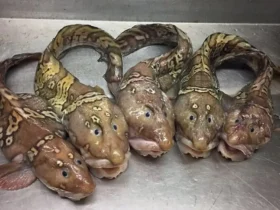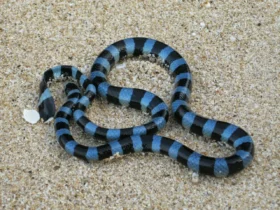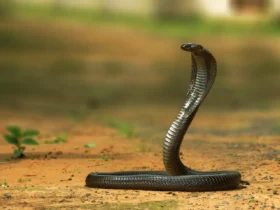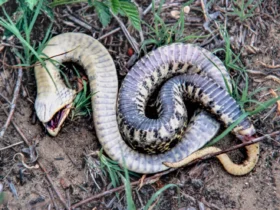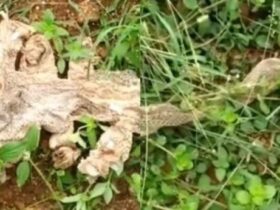Are you familiar with the gem called Nagamanikyam? This extraordinary mystical stone is created within the head of a cobra. Its color changes from bright yellow during the day to dazzling red hues at night. Possessing this gem is believed to grant unlimited fortunes and power. Unfortunately, many people have been deceived by fraudsters claiming to possess the genuine Nagamanikyam, drawn in by the captivating tale surrounding it.
The narrative surrounding Nagamanikyam varies from person to person. According to one version, the cobra possessing the gem spits it out on full-moon and new-moon nights after offering prayers to its deity. A gem hunter seizes this opportunity to snatch the gem and conceal it in a pile of cow dung. The cobra, upon completing its prayer, becomes distressed when it can’t locate the stone and eventually dies of sorrow. The hunter then retrieves the gem from the cow dung, cleanses it with milk and rosewater, and becomes the owner of this priceless jewel.
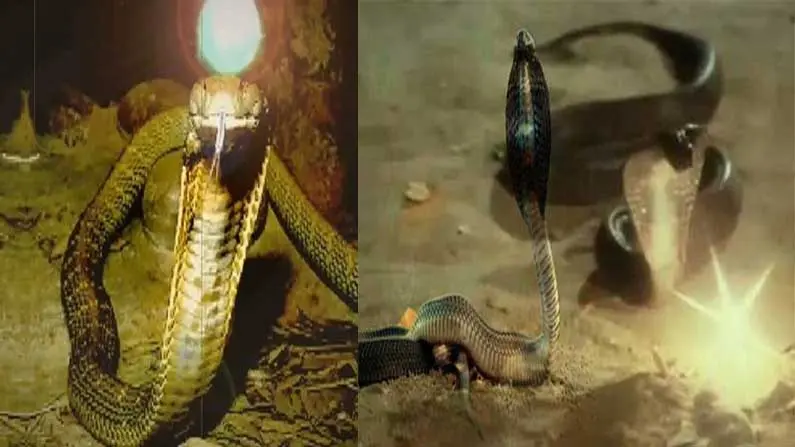
People have been known to pay exorbitant sums, reaching up to ₹5 crores according to some sources, in their pursuit of this enigmatic fortune magnet. This raises the question: How did the myth of Nagamanikyam originate?
The Tale of Pambummekkatt Namboodiri
The myth of Nagamanikyam is believed to stem from the ancient legend of Pambummekkatt Namboodiri. It is also linked to the origin of Pambummekkatt Mana, the first serpent-worshipping temple in Kerala, located in Thrissur.
Centuries ago, when the people residing in Mekkatt Mana were burdened by poverty, the Namboodiri embarked on a 12-year pilgrimage to the Thiruvanchikulam temple, seeking relief from their hardships. One day, he encountered a mysterious sage near the Thiruvanchikulam pond, adorned with a peculiar ring. Intrigued, the Namboodiri asked to see the ring, and the sage obliged before promptly vanishing. The following day, the sage reappeared, and the Namboodiri inquired about his identity. To the Namboodiri’s astonishment, the sage revealed himself as Vasuki, the God of Snakes.
Vasuki offered to fulfill one wish for the devout Namboodiri, who promptly requested Vasuki’s presence and blessings for the poverty-stricken Mekkatt Mana. Upon the Namboodiri’s return to the Mana, Vasuki and Nagayakshi (the Goddess of Snakes) materialized before him, instructing him to enshrine their idols as the family deities and offer prayers. Following their instructions, the Namboodiri established the idols, and from that point on, Mekkatt Mana became known as Pambummekkatt Mana.
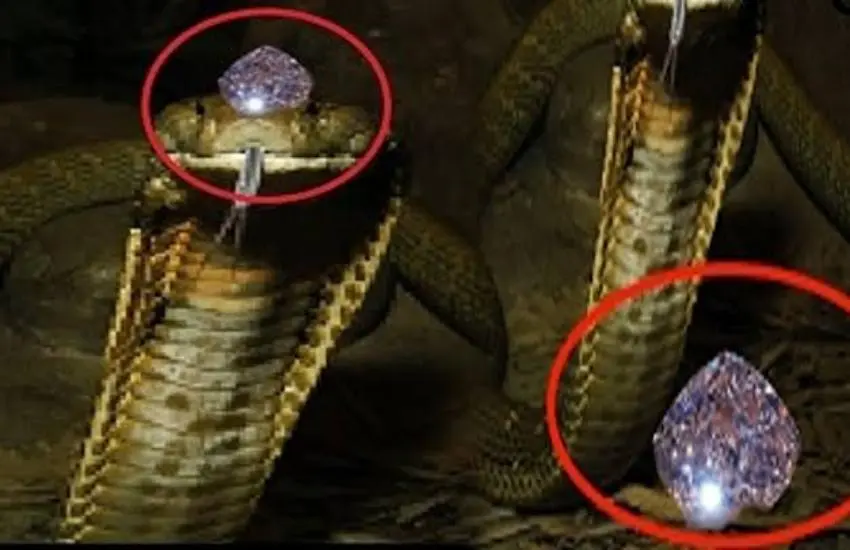
It is also believed that Vasuki presented the Nagamanikyam itself to the Namboodiri, who placed it within the Mana.
Pambummekkatt Mana in Thrissur stands as the first Nagaraja temple, featuring a renowned myth of a five-headed snake residing within its premises. The eastern portion, known as ‘Kizhakkini,’ is believed to house the divine presence of Vasuki and Nagayakshi. Additionally, there are five sarpa kavu (sacred groves) near the temple, and an eternal lamp burning with oil believed to possess healing properties for snake venom-related ailments.
However, there are more stories associated with Nagamanikyam.

The Legend of Ichchadhari Naag/Naagin
According to Indian mythology, Ichchadhari Naag or Naagin refers to shape-shifting serpents entrusted with protecting the Naagmani or Nagamanikyam.
A regular cobra becomes an Ichchadhari Naag or Naagin after a hundred years of penance and attaining the blessings of Lord Shiva. In their transformed state, they can assume the appearance of any living being, including humans. They possess an extended lifespan, exceeding a hundred years, without experiencing aging. However, when a Naag or Naagin is killed, the image of the killer becomes imprinted in their eyes, compelling their partner to seek vengeance. While seeking revenge, they can assume various forms but are compelled to reveal their true form upon hearing the sound of the been, the musical instrument used by snake charmers.
Ichchadhari Naags and Naagins guard a gem called Naagmani or Nagamanikyam, which they protect with their lives.
The Bollywood film “Nagina” from 1986, starring Sridevi, revolves around the story of a Naagin seeking retribution for the murder of her spouse. The movie highlights the concept of Naagmani as well.

What is the Actual Nagamanikyam?
It’s important to note that no scientific evidence supports the existence of a magical Nagamanikyam gem. The known animal-derived gems are limited to the pearl, red coral, and fossilized resin known as amber.
In several countries, including India, there is a stone referred to as the snake-stone or viper’s stone, used as folk medicine for treating snakebites. The snake-stone is typically an animal bone, which may or may not originate from a snake, and is utilized in various ways to address venomous snake bites. This traditional medical practice is prevalent in countries like India, Africa, and South America. However, the World Health Organization (WHO) has stated that this method has no effect on snakebites and only delays proper medical treatment.
There exists an actual version of Nagamani or Nagaratna, obtained from the skulls or tails of venomous snakes, particularly cobras, earning it the name “cobra pearl.” Occasionally, a cobra may use only a portion of its venom when hunting, leaving behind excess venom on the top portion of its skull. As this extra venom accumulates over time, it solidifies into a blue-black mass resembling a gem. This gem is considered rare since most cobras utilize their entire venom supply when hunting, leaving no excess to form such a deposit.
Typically, Nagamani is obtained from snakes after their demise, although instances of mass snake killings in search of this “gem” have been reported.
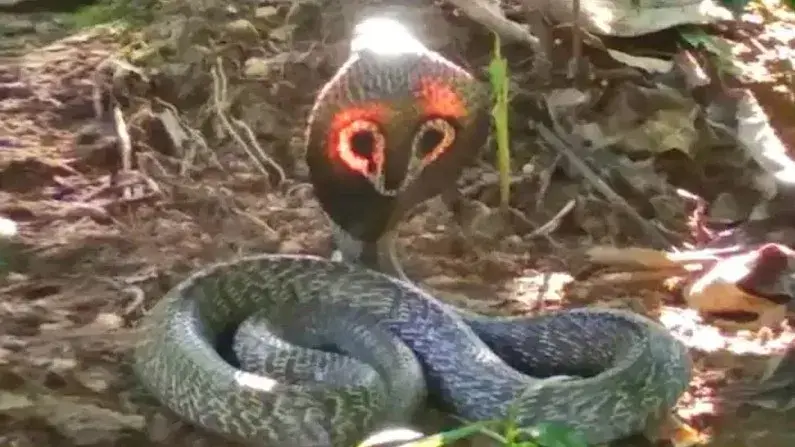
Scams Exploiting the Name of Nagamanikyam
The legend of Nagamanikyam has been widely exploited in scams, deceiving unsuspecting individuals into paying enormous sums. In 2015, three con artists from Tamil Nadu were apprehended while attempting to sell a Nagamani for ₹1,000 crores. They had placed the stone near two hibiscus flowers, claiming that their blooming was attributed to the Nagamani’s power. Unbeknownst to them, their customers were undercover detectives, resulting in their red-handed capture.
Various tricks are employed to convince buyers of the stone’s supposed powers. For example, synthetic stones may conceal LED bulbs, creating a radiance that appears to emanate from the gem in dimly lit rooms.
And There’s More…
The fascination doesn’t end with Nagamanikyam. Although not as renowned or sought after, there are cheaper “gems” like Aranamanikyam and Gajamuth.
Aranamanikyam is another mythical gem purportedly emerging from the mouth of a skink, while Gajamuth is obtained from an elephant’s head. The actual version of Gajamuth or elephant pearl, however, is not a gem but rather a calcium formation found inside the large teeth of elephants. Like Nagamanikyam, these gems are believed to possess magical powers and bring good fortune.
Despite the seemingly convincing stories and tactics employed, there is no scientific evidence supporting the existence of these gems. Nevertheless, people continue to fall prey to such schemes, emphasizing the importance of consulting a gem testing laboratory before purchasing any valuable gemstones.
